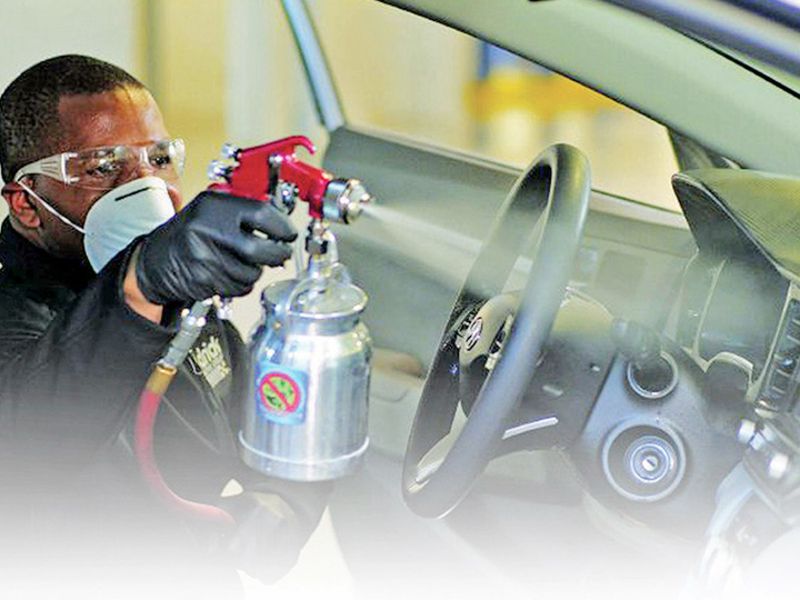
When service department traffic plummeted in the early weeks of the coronavirus pandemic, dealerships quickly shifted gears to ease the minds of customers worried about human contact.
We’ll come get your car, service it and bring it back to you, service departments told customers. You stay at home. No extra charge.
A concierge service that had been chiefly offered by luxury brands suddenly became a must-do for mainstream brands to keep their service bays busy while their customers were hunkered down under state-mandated stay-at-home orders.
But when the urgent need to pick up and deliver cars ends, should dealerships continue to offer the service? And if they do, should it still be free?
That is something Ed Roberts, fixed operations director at Bozard Ford-Lincoln in St. Augustine, Fla., mulled for a long time. Roberts was convinced the service to customers’ homes should continue but wasn’t sure it should remain complimentary.
In March, Bozard extended the free pickup and drop-off service that Lincoln customers had been receiving to its Ford customers as well, a move that has been embraced by customers and has helped spread out the workload in his shop.
“If COVID wouldn’t have hit, I was probably two years away from doing pickup and delivery on the Ford brand. We would have gotten to it, but it was not as high on the priority list,” Roberts told Fixed Ops Journal.
Roberts says the dealership “tossed around several ideas” on whether to charge for pickup and delivery and for two service vans that go to customers’ homes. It was decided that Ford owners would pay $39.99 for pickup and delivery and Lincoln owners would receive the service for free for the first five years of ownership.
But Roberts gives service advisers, business development center staff and others at the dealership wide latitude to waive the fee, which was implemented in mid-June.
For the mobile service, fleet customers with four or more vehicles are not charged. For those with fewer than that and individuals who might want, for example, an oil change in their driveway, the fee is $39.99. Again, it can be waived.
David Foutz, vice president of sales for Cox Automotive, theorizes that some dealers don’t think they will need to provide such concierge services once COVID- 19 concerns dissipate.
As business picks up, “there are fewer people available to provide that extra service if their bays are full again,” Foutz says. “It takes some work and some organization to offer this successfully over time.”
Lee Harkins, CEO of M5 Management Services, a service department consultancy and training company in Pelham, Ala., says dealerships should not weigh the costs of pickup and delivery only against alternatives, such as a loaner car or vouchers for Uber or Lyft. They also should consider how the service affects customer satisfaction, shop workflow and the ability to sell extra services to customers.
Bozard’s Roberts says that after a customer has been sitting in the waiting area for an hour, it is tough for a service adviser to try to sell additional services — work that will take another hour and a half — because the customer wants to leave. If the customer is at home, they may be more inclined to agree to additional work, and there’s less pressure in the shop to finish the job quickly.
“There are spikes throughout the day,” Roberts says. “You manage your capacity much better by doing pickup and delivery and not having [the customers] here.”
Bozard picks up 30 to 35 vehicles from customers per day, about 10 to 12 percent of its repair orders, and Roberts says he expects that to increase as more customers become aware of the service. Eventually, he would like to pick up and deliver 60 percent of his Lincoln business, which would put him at 20 percent of repair orders overall.
Joel Adames, service manager of Honda of Downtown Chicago, says that in late March, he launched an aggressive offer to customers whose vehicles had open recalls: The dealership would pick up the customer’s vehicle, do the recall work and sanitize the vehicle, and bring it back at no charge.
That gave technicians the opportunity to find additional customer-pay work on hundreds of vehicles, and the owners didn’t risk catching or spreading the virus by coming to the store.
The dealership shares a crowded five-story building with a Volkswagen franchise. The service department for each is on one floor, and parking is on another, which Adames says is a logistical nightmare when customers are queued up waiting for their vehicles to be located and driven down narrow ramps.
Adames says the dealership now picks up “about 40 to 50 percent” of the vehicles it services — down from a summer high of 80 percent — eliminating most of the typical traffic jams.
“My [customer service] scores skyrocketed because I didn’t have people waiting at the dealership for their car,” he says.
The service was originally free to customers, but Adames now charges $29.99, with some exceptions.
“People will expect to [still] have the amenity, but you can always change it to something that you can ask a little more for,” he says. “People still pay a premium for great service. That’s why Uber Eats is making so much money right now. It was convenient, it was safe, and they’ll pay for it.”
Cox’s Foutz thinks pickup and delivery is here to stay.
“We’re hearing from consumers that they’re using it, and they appreciate it, and we hear it from dealers,” he says. “Consumers definitely have told us consistently that they would choose convenience and a trusted provider of service over someone they simply perceive as less expensive.”